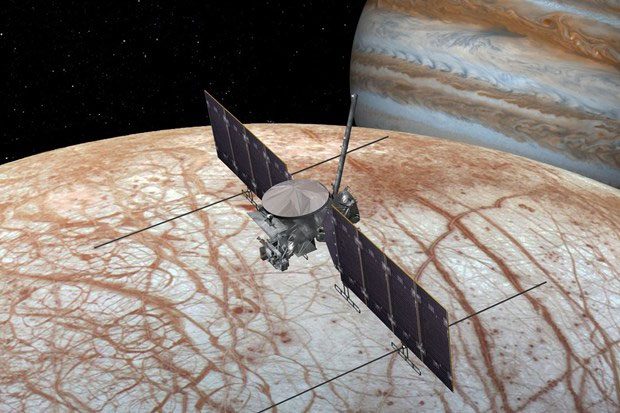The destination of the Europa Clipper spacecraft will be Jupiter’s icy moon, Europa. Although it is classified as a moon, it is larger than the former “ninth planet” of the Solar System and shares many similarities with Earth.
According to NASA, the scientific instruments and main components of the spacecraft are being assembled in the final stages in preparation for its launch in 2024.
When fully assembled, the Europa Clipper will be about the size of an SUV but equipped with solar panels that, if laid out, would stretch the length of a basketball court. Every detail of the spacecraft is handcrafted.
NASA plans to launch the Europa Clipper mission to explore Jupiter’s moon Europa in October 2024 using the Falcon Heavy rocket, the most powerful rocket manufactured by SpaceX.

The Europa Clipper spacecraft will assess the potential for life on Europa. (Image credit: NASA)
This is considered a significant victory for SpaceX as the company aims to explore deeper into the Solar System.
According to the plan, NASA’s Europa Clipper will be launched from the Kennedy Space Center in Florida in October 2024 using the Falcon Heavy rocket, the most powerful rocket developed by SpaceX.
The total contract value for this rocket launch service is $178 million.
Previously, NASA intended to send the Europa Clipper into space using its Space Launch System (SLS).
However, this plan encountered setbacks due to delays and excessive costs, which have not yet been approved by NASA.
While the SLS has not yet been operational, the Falcon Heavy rocket has been deployed for commercial and government missions since its first flight in 2018, when it launched billionaire Elon Musk’s Tesla Roadster into space.
As planned, the Europa Clipper will conduct approximately 40-50 flybys of Europa to determine whether this icy moon has conditions suitable for life.
The spacecraft will carry instruments, including cameras and spectrometers, to capture high-resolution images and create maps of the surface and atmosphere’s composition, as well as radar to penetrate the ice layer in search of water beneath.
|
Europa has been dubbed by NASA as “the moon of life,” “the twin of Earth” due to its many similar characteristics: oceans, organic materials, hydrothermal systems… which are highly conducive to nurturing life. Although it holds the “status” of a moon of Jupiter, it is larger than Pluto – the “ninth planet” that was reclassified in the Solar System, and NASA is advocating for its status to be restored as a planet. Europa’s structure includes a solid metallic core, a thick outer layer, a subsurface ocean warmed by volcanic activity and hydrothermal systems, along with an icy shell enveloping it, similar to many other planets that have been studied. |



















































